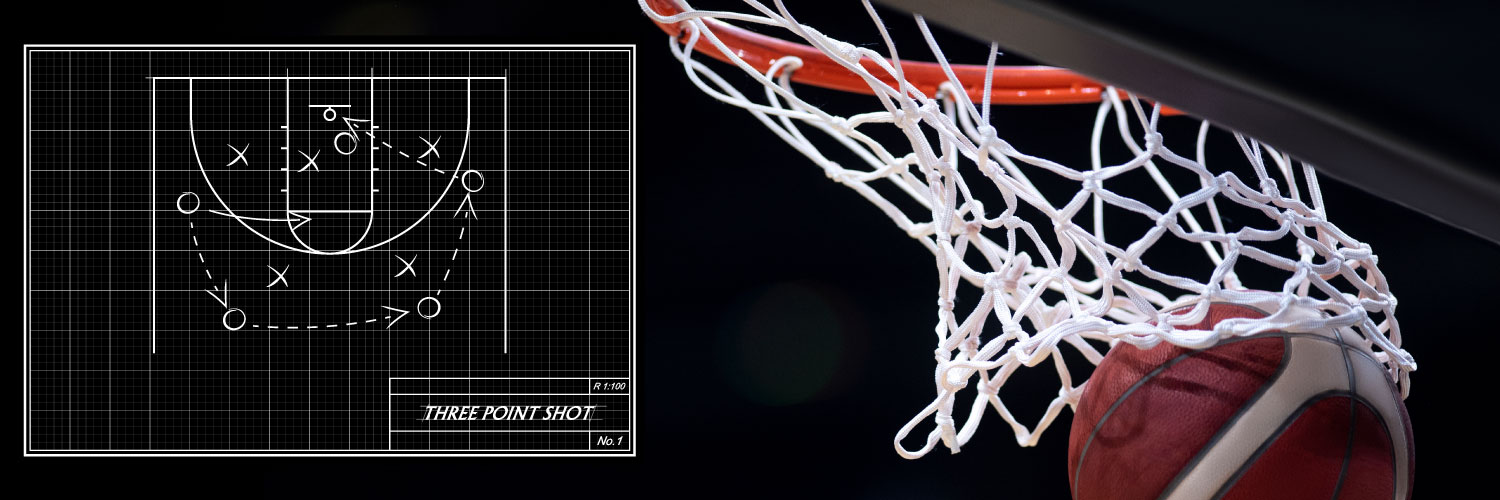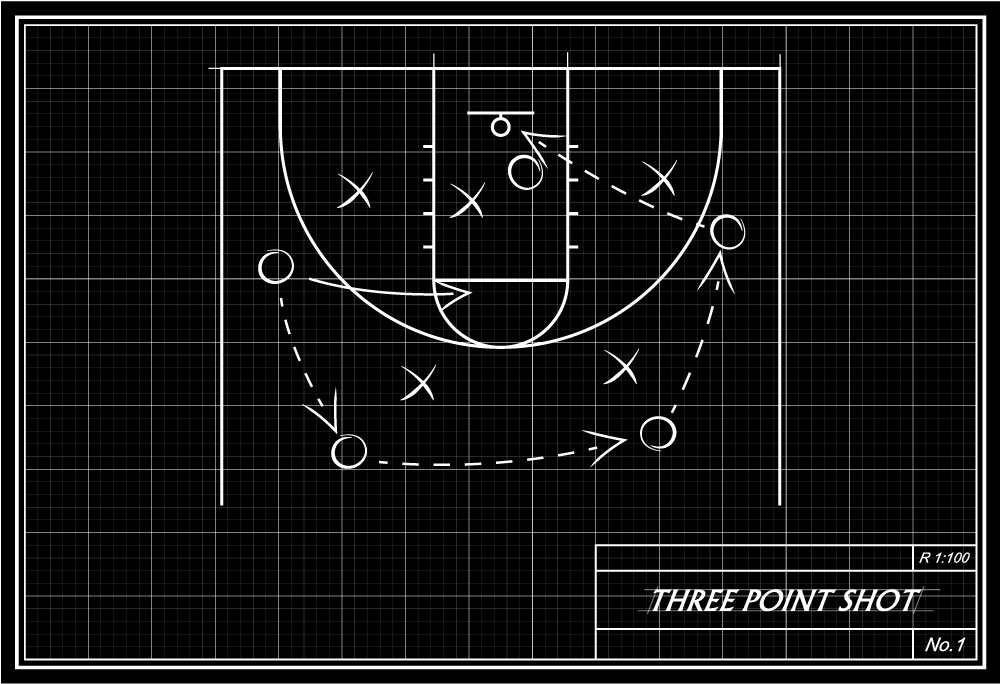
The NBA’s 3-point shot provides a cautionary tale for leaders navigating disruptive innovation
Why were coaches, players, and managers so slow to adopt the 3-point shot? The answer can help us make better decisions.
The 3-point shot changed the dynamics of basketball and created the possibility for new strategies and new paths to success.

While on one level this is about basketball, this is also about how any type of organization may be slow to recognize and take advantage of changes and disruptive innovations in their world.
In the 1979-1980 season, the NBA introduced a line on the court, 23.75 feet from the basket, beyond which all shots were worth 3 points. At that time, “the 3-point shot,” as it came to be known, was treated by players and coaches as more of a novelty than a strategic asset.
Fewer than 5% of all shots taken that season were 3-point attempts. Larry Bird, a hall-of-famer, and perhaps the best long-range shooter in the league at that time, finds it baffling that the shot was so neglected:
“It’s strange when you think back. I can’t remember even practicing the shot unless it was for the [annual 3-point shooting] contest. I really didn’t take that many, compared to today.”
The introduction of the 3-point shot was akin to a disruptive innovation, like the arrival of Uber as a threat to the taxi business in 2009, or digital photography in the early 80s, or today the emergence of Chat-GPT and its potential to disrupt many industries. The 3-point shot changed the dynamics of basketball and created the possibility for new strategies and new paths to success.
Creating competitive advantage after a disruptive innovation requires superior decision-making skills and an awareness of the decision traps that could slow adoption, as we will see with the 3-point shot.
That the 3-point shot changed the game is not surprising, but the fact that players, coaches, and managers took so long to adopt to it is a cautionary tale for leaders making decisions related to navigating change in today’s world.
In the early years after the introduction of the 3-point shot there was an obvious hurdle to adoption: the skill of the players. When players did attempt a 3-point shot, they made, on average, just over 25%. Was it then, a good decision, for the coaches and managers at the time to basically ignore the 3-point shot?
One way to evaluate the quality of a choice is to look at the expected value (EV) of the choice and compare it the expected value of another choice, in this case the EV of a 3-point shot and the EV of a 2-point shot. You do this by multiplying the probability of success times the value of the shot:
Expected Value [3-point Shot] = [0.253] x [3] = .76
This means that every 3-point-shot attempt is worth on average approximately 3/4 of a point. This compares to the EV of a 2-point shot, which at the time, players made roughly 50% of time:
Expected Value [2-point Shot] = [.495] x [2] = .99
So, in the early years of the 3-point shot, NBA players didn’t have the skill to make a 3-point-shot strategy successful. However, over the next 10 years, as a new generation of players entering the NBA grew up practicing the 3-point shot, the probability of success increased.
By the 1990-1991 season, the expected value of a 3-point shot was equal to the 2-point shot. One would expect to start seeing a higher percentage of 3-point shots, particularly since those also had the potential to pull defenders away from the basket and open up new offensive possibilities.
Yet, in the early 90s, the 3-point shot still made up fewer than 8% of all shots.
Fast forward 5 years to the 1996-1997 season. Players continued to develop their shooting skills and were now making 35% of all attempts beyond the arc, and the EV for the shot improved to 1.1 points per attempt, while the expected value of the 2-point shot remained relatively unchanged, near 1.0 point per attempt.
That may not seem like a big difference, but over the course of a season, a team that employed a 3-point-heavy strategy would create a discernable advantage over a team that didn’t.
By the early 2000s, for anyone crunching the numbers, a very clear opportunity was emerging. Michael Mouboussin, a researcher at Morgan Stanley and an author who has written extensively on decision-making, recently published a paper on the NBA’s slow pace of adjusting to the 3-point shot. Here is his analysis:
“The expected value of 3-pointers was 14 percent higher than 2-pointers in the 2003/04 season. The natural way to arbitrage that expected value differential is to take more 3-point shots and fewer mid-range 2-point shots.”
In that same paper by Mauboussin, Darryl Morey, the president of basketball operations for the Philadelphia Seventy-Sixers and an expert on basketball analytics, estimated that:
"At its inception, the strategy of taking more 3s at the expense of mid-range jumpers resulted in approximately 12 more wins a year, roughly equivalent to spending $30 million more a year on star players.”
It wasn’t until the last 10 seasons that NBA teams, led by the Golden State Warriors and their star 3-point shooter, Stephen Curry, established a competitive advantage by drafting players well-suited for 3-point shots, and implementing a 3-point-shot heavy strategy.
Why did it take so long? If the advantage emerged as early as 1997, what prevented coaches, players and managers from making a decision to shoot more 3-pointers?
One culprit is the Loss Aversion/Sunk Cost Decision Trap, one of the more powerful and prevalent decision traps that often impact individuals and organizations.
Consider that teams and coaches had already spent years developing strategies that relied heavily on 2-point shots and investing in players to execute that strategy. To change this strategy would require “letting go” of some of these people investments from the past – not just players, but also coaches who were primarily skilled in executing a 2-point strategy.
Although it is easy in retrospect to point critically at people who were slow to change in an industry, it is much harder to walk away from past investments of time, money, energy, and focus.
Then there is the powerful Status Quo Trap. Doing something new often seems riskier than sticking with the tried and true, even when a new approach could well provide advantages. The new 3-point strategy was more of an unknown, whereas coaches and managers knew what to expect with the existing 2-point-heavy strategy. They had lots of experience with it and they knew how to execute it.
Plus, we live in a world where coaches, managers and players are more likely to be criticized for doing something new and not having it work perfectly than sticking with the known strategy and failing. They could be sure that the pundits covering the team, as well the social media amplifiers, would be critical of the strategy, in part because it defied convention and in part because it wasn’t the tried and true path to success.
The Availability Trap likely also played a role. If a coach did try to implement a strategy that relied on taking more 3-point shots, the coach and team would have to suffer through stretches when the strategy did not work as intended, with the game highlight reels celebrating the dramatic big dunks in close to the basket that did work.
Plus, in the early days there were simply a lot more statistics available about teams and players’ 2-point-shot selections, percentages made, and the like. All of us are influenced by information that is in the news, information that is more recent or dramatic and sticky in the memory, or what is easy to obtain – and players and coaches and managers are no exception.
We also can’t overlook the Confirming Evidence Trap. Today coaches, managers and players are barraged with streams of data about the game, about their and other team’s performances, and about their own individual performances. It is easy to unconsciously privilege the data that subtly confirms views you might already hold.
In the early days of the 3-point shot, there was plenty of data coaches could over-index on related to the number of 3-point attempts players missed. As Warren Buffet has been famously quoted: “What the human being is best at doing is interpreting all new information so that their prior conclusions remain intact.”
Finally, there is the ever-present Self-Interest Trap. Coaches in particular live in a world where it is all about “what have you done for us lately.” Spending a less-than-successful season developing the 3-point strategies and skills to win in a future season may also mean you are fired before you are able to enjoy that future successful season.
So, stick with what you know, don’t take too many risks, listen to the pundits, and hope that no other team makes your current strategy obsolete.
While on one level this is about basketball, this is also about how any type of organization may be slow to recognize and take advantage of changes and disruptive innovations in their world.
The decision traps described above predictably impact managers and professionals at all levels in all organizations. These decision traps slow adoption of new strategies that might create significant competitive advantage, and they undermine the development of new skills and capabilities that might become significant X-factors in the future.
As is often said, the first step in avoiding these traps is awareness, in this case awareness of the potential of these decision traps leading to sub-optimal decisions and actions.
The second step is developing explicit personal and organizational strategies to both anticipate and mitigate the negative impact of these potential decision traps. Individuals and organizations that do this well will create real competitive advantage over those that don’t.
This leads to one final question: What is the next game-changing disruption and/or “skill” that will show up in basketball?
- Is it having more players who have a unique ability to see the floor like the Denver Nuggets’ Nikola Jokic?
- Is it simply continuing to develop even more players like the Golden State Warriors’ Stephen Curry?
- Is it another way of playing the game that we have yet to imagine?
We can’t know the answer to this question, but we can safely predict that the team that breaks through in the future will have overcome these 5 decision traps.
- 3 decision-making lessons from ‘A Christmas Carol’ - December 19, 2023
- 8 ways to use generative AI to improve decision-making - December 4, 2023
- The NBA’s 3-point shot provides a cautionary tale for leaders navigating disruptive innovation - May 30, 2023
